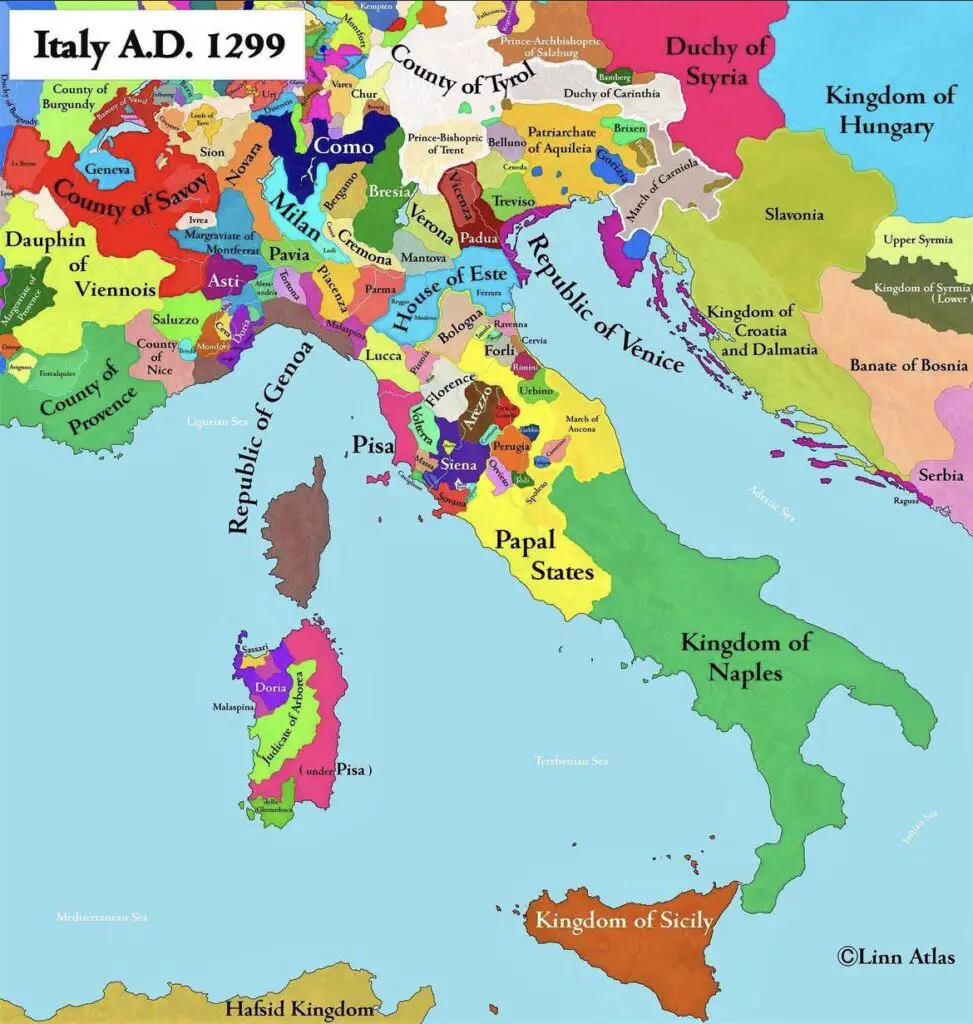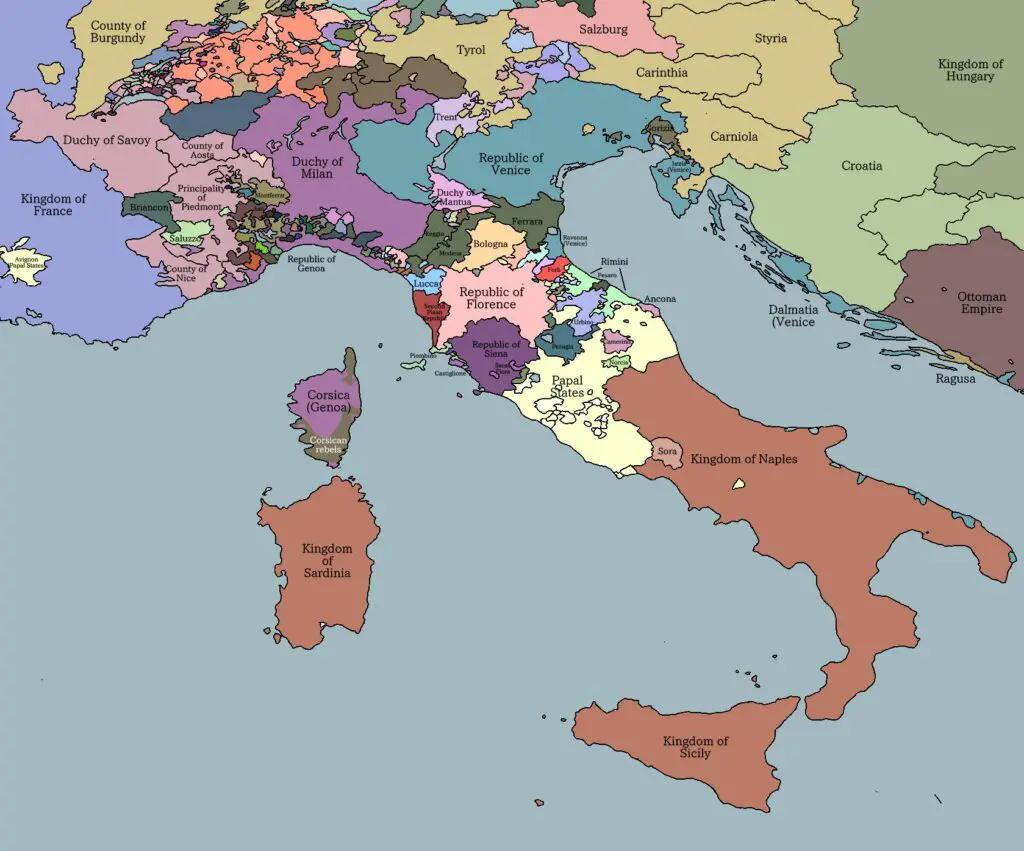Italy through the years
The Apennine Peninsula, commonly referred to as Italy, has a rich and complex history that spans thousands of years.
Ancient Times: The region that is now Italy was home to various ancient civilizations, including the Etruscans and Greeks. Rome, founded in 753 BC, gradually expanded its influence and conquered neighboring territories, leading to the establishment of the Roman Republic. The Romans went on to create a vast empire that encompassed much of Europe, North Africa, and the Middle East.
Roman Empire: The Roman Empire reached its zenith in the 1st and 2nd centuries AD, but internal strife and external pressures eventually led to its decline. In 476 AD, the last Roman emperor was deposed by Germanic tribes, marking the traditional date for the fall of the Western Roman Empire.
Medieval Period: After the fall of Rome, the Italian Peninsula was divided into various smaller states and kingdoms, such as the Byzantine Exarchate of Ravenna, the Papal States, and various Lombard and Frankish territories. The city-states of Venice, Genoa, Florence, and Milan gained prominence during this time as centers of trade, culture, and political power.
Renaissance: The Italian Renaissance, starting in the 14th century, was a period of remarkable cultural, artistic, and intellectual flourishing. This era produced iconic figures like Leonardo da Vinci, Michelangelo, and Raphael, and it had a profound influence on European art, science, and philosophy.
Unification: In the 19th century, Italy underwent a process of unification, known as the Risorgimento, which aimed to consolidate the numerous small states and kingdoms into a single nation. Figures like Giuseppe Garibaldi and Count Camillo di Cavour played crucial roles in this movement, and by 1871, the Kingdom of Italy was officially established under King Victor Emmanuel II.
20th Century: Italy faced political challenges during the 20th century, including involvement in World War I on the side of the Allies and the rise of Fascism under Benito Mussolini. Mussolini’s regime aligned with Nazi Germany during World War II, leading to the country’s devastation and subsequent liberation by Allied forces.
Modern Italy: After World War II, Italy underwent significant political changes, including the establishment of the Italian Republic in 1946. The country gradually recovered and experienced economic growth, becoming an important player in European and global affairs. Italy is known for its rich cultural heritage, contributions to art, fashion, cuisine, and its status as a member of the European Union.
Below are maps that illustrate notable political-administrative changes in different historical time periods of the Apennine Peninsula.
Italy in 1299
In 1299, Italy was a collection of fragmented city-states and territories, marked by political and cultural diversity. The Italian Peninsula was characterized by the influence of powerful city-states such as Venice, Genoa, Florence, and Milan, each vying for control over trade routes, wealth, and territory. This period laid the groundwork for the Renaissance and the later unification of Italy in the 19th century.

Italy in 1499
The map of Italy just before the Italian Wars. In 1499, Italy was still a collection of independent city-states and territories, but the Italian Renaissance was in full swing. The region was a cultural epicenter, with flourishing art, literature, and intellectual pursuits. Powerful city-states like Florence, Venice, and Milan were major patrons of artists like Leonardo da Vinci and Michelangelo. However, the ongoing power struggles among these states and foreign invasions marked the political landscape, paving the way for shifts in power and the eventual unification of Italy in the 19th century.

Italy in 1799
In 1799, Italy was undergoing significant political upheaval due to the Napoleonic Wars. Napoleon Bonaparte’s forces had invaded various Italian territories, leading to the establishment of client republics and the spread of revolutionary ideas. The Cisalpine Republic and the Roman Republic were among the short-lived entities formed during this time. The region experienced a mix of support and resistance to French rule, reflecting the complexities of the era’s political transformations.

To learn more about Italy, we recommend the following books:








